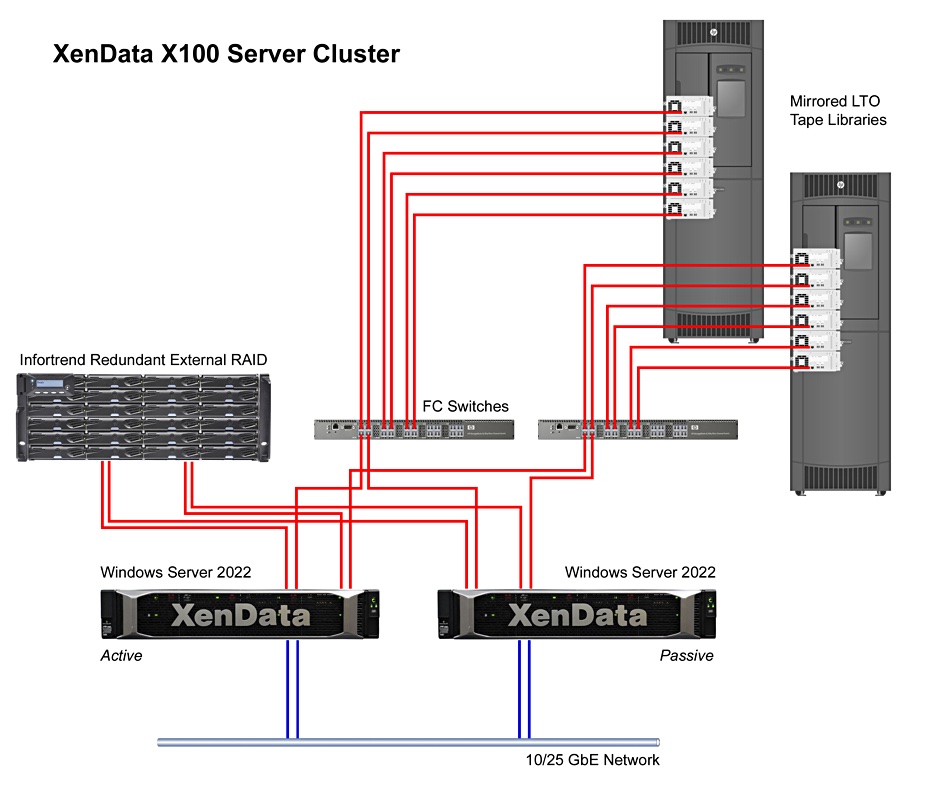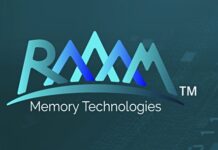XenData has announced an X100 active archive which can manage multiple hundreds of petabytes in tape or optical cartridge libraries with a front-end RAID cache.
This system is for enterprises needing to safely store and access huge troves of large file data such as video, medical imaging, video surveillance and other applications.
XenData has customers in more than 90 countries world-wide using its archive software. Its new software is optimized for multi-core, multi-CPU servers. The X100 is its top-of-the-range system, fitting above existing X20-S, X40-S and X60-S products.
Mark Broadbent, XenData CTO and co-founder, issued an announcement quote, saying: “The design of the X100 is based on everything that we have learned from the 1,500+ XenData archives that have been installed worldwide. It uses a simple architecture which takes advantage of the power of today’s multi-processor servers.”

The system is composed of one or a pair of controlling Windows 2022 servers hooked up across a Fibre Channel network to an Infortrend RAID array acting as a cache. These servers function in active:passive mode and they and the array are linked to robotic LTO tape or Sony optical disk archive (ODA) libraries with XenData supporting libraries from HPE, IBM, Oracle, Qualstar, Quantum, Sony and Spectra Logic.
Three interfaces can be used concurrently by applications and users:
- File:folder which supports FTP, NFS, SMB and local file transfers;
- S3 object storage supporting HTTP and HTTPS;
- The XML API which provides frame accurate timecode-based partial file restores for video archives.
The XML instructions include the ability to pull assets from a source location and push them back to that location or another destination.
Three levels of storage hierarchy are supported:
- Online disk with one instance of a file on the external RAID and, in addition, there will typically be one or more instances on LTO or ODA. In this case, the file will be retrieved from disk when accessed over the network.
- Near-line with at least one instance of a file on an LTO or ODA cartridge within the library and no instances on RAID. When a file on near-line LTO or ODA is accessed over the network, the XenData software automatically transfers the file over the network directly from LTO/ODA in response to the network read request.
- Offline with no instances on RAID and instances of a file on one or more LTO or ODA cartridges, all of which have been exported from the robotic library. All XenData systems, including the X100, are licensed for a unlimited number of offline cartridges.
The Infortrend RAID system is fully redundant and holds up to 280TB of data. Data can be sent to the libraries using the LTFS protocol for lTO tapes and Sony’s interchange standard for ODA cartridges. XenData’s software supports Active Directory and its security model making it a good fit in the Windows domain. It includes automatic LTO cartridge replication, file version control, automatic migration of files to the latest generation of LTO or ODA and management of an unlimited number of external cartridges.

Two LTO libraries can be configured to mirror archived content across the libraries, with file restores load-balanced between them. A Multi-Site Sync feature enables multiple X100 systems to be synchronized inside a single and global filesystem and so provide a consistent up-to-date set of files across the entire distributed organization. When a file is archived to LTO or ODA at one location, it becomes available as a stub file within the global file system. If a user makes a change by writing, overwriting or deleting a file, the change is propagated to all locations.
Get an X100 product brief here.
.








